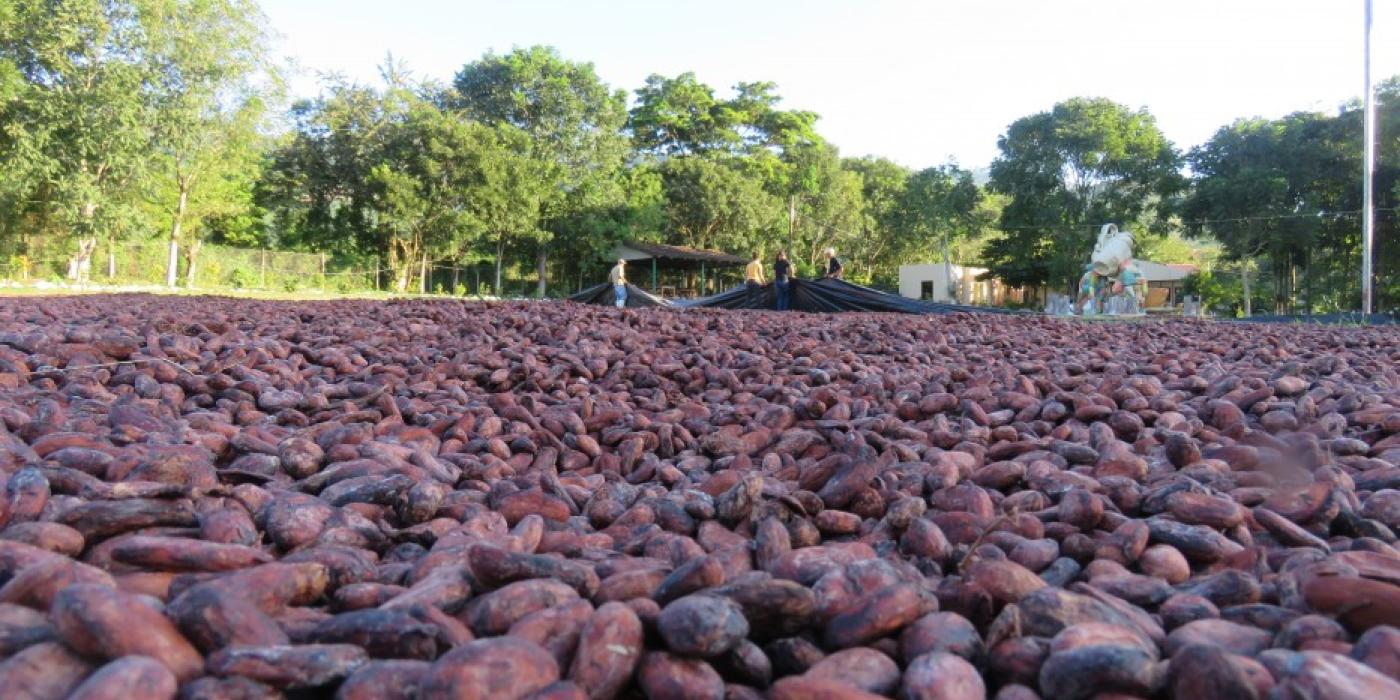Cocoa Agroforestry Library
Cocoa agroforestry systems have been studied by many researchers. However, finding and interpreting this research is a challenge for many groups. The Cocoa Agroforestry Library, a new tool from the Smithsonian Migratory Bird Center’s Bird Friendly Habitat Program, brings together all available scientific literature on cocoa agroforestry to support sustainable cocoa implementation and research. This library complements the INAFORESTA library, which houses many older and Latin American-focused resources.
What do birds and cocoa have in common?
The cocoa tree (Theobroma cacao) is farmed within biodiversity hotspots of West Africa, South America, and Southeast Asia. Cocoa was traditionally grown under a canopy of native trees that provided habitat for birds and other wildlife. However, pressure to increase cocoa production has pushed many farmers to clear forest and eliminate the shade trees on their farms.
An estimated 2-3 million hectares of tropical forest were converted to cocoa from 1988-2008 with severe consequences for biodiversity. Unsustainable cocoa monocultures (agricultural systems growing a single crop type) eventually collapse from disease, pests and soil degradation, hurting local communities as well as bird populations. Eliminating monoculture cocoa from supply chains and converting to sustainable agroforestry systems can help maintain productive farms while protecting habitats and biodiversity.
How does cocoa agroforesty help birds and farmers?
Agroforestry refers to agricultural systems that have crops and trees together. When cocoa is farmed under a shade canopy of native trees, it can support the same abundance of birds as a forest. Cocoa agroforestry provides movement corridors for wildlife and nesting and resting places for birds. These birds also give back to farmers. In many cocoa agroforests, birds eat insects that can damage the cocoa crop, which can decrease a farmer’s reliance on harmful pesticides. Additionally, agroforestry cocoa is typically better for farmer income than monoculture cocoa, because it provides income diversification, food security, and ecosystem services that reduce dependence on costly inputs. The successful implementation of agroforestry relies on farmer inclusion and leadership at all stages of design, planting and management.
What is the Cocoa Agroforestry Library?
The Cocoa Agroforestry Library brings together and categorizes all publicly available scientific literature on cocoa agroforestry for use by industry, governments, academics, activists, farmer groups and others. The electronic library houses this extensive collection of research in one place for the first time, and is easily searchable by region, country and topic. As stakeholders work to build cocoa agroforestry systems that optimize yields, ecosystem services, biodiversity conservation and farmer profits, this new tool provides them with access to comprehensive research on cocoa agroforestry and the ability to make decisions based on the best available science. The library was developed to inspire research institutions to publish new syntheses that support sustainable cocoa and to make this information more accessible to stakeholders throughout cocoa supply chains.
While the Cocoa Library compiles available research, knowledge gaps still exist. Further studies are necessary to address climate resiliency and factors that determine successful agroforestry implementation. And for migratory birds, much remains to be learned about how cocoa agroforestry management impacts survival and population dynamics.
Explore the Cocoa Agroforestry Library. This catalogue is a “living” library. To suggest additional literature or reports for inclusion, email BirdFriendly@si.edu.












